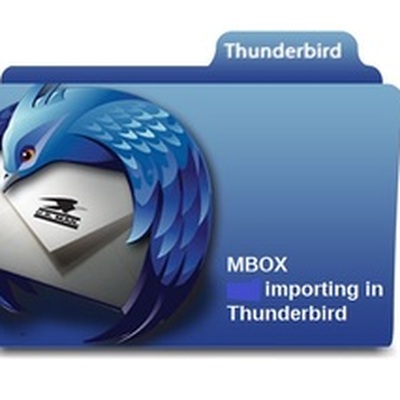-
 Find in Members
Find in Members Find in Videos
Find in Videos Find in Channels
Find in Channels
This website uses cookies to ensure you get the best experience on our website.
To learn more about our privacy policy Click herePrivacy Preference
- Tags - #Exchange Online Outlook Compatibility #Office 365 Outlook Compatibility
-
- Last updated March 16, 2024 0 comments, 123 views, 0 likes
- United States - Get Directions
More from Hannah Baker
More in Politics
Related Blogs
Exchange Online Outlook Compatibility: Seamless Integration
Body
In today's digital age, email communication remains a cornerstone of both personal and professional interactions. Microsoft Exchange Online and Outlook are two widely used platforms for managing emails and calendars. Understanding the compatibility between Exchange Online and Outlook is crucial for users to leverage the full potential of these tools without encountering any glitches.
Introduction: Navigating the Compatibility Landscape
Exchange Online and Outlook are like two puzzle pieces designed to fit seamlessly together, but occasionally, there might be compatibility issues that users need to address. Let's explore how these platforms work together and how users can ensure smooth compatibility.
Understanding Exchange Online and Outlook
Exchange Online: Microsoft Exchange Online is a cloud-based email service hosted by Microsoft as part of Office 365. It provides businesses with the benefits of email hosting without the complexity of managing their servers.
Outlook: Outlook is an email client developed by Microsoft that's part of the Office suite. It offers features for email organization, calendaring, task management, and more.
Compatibility Features and Benefits
Seamless Synchronization: Exchange Online and Outlook synchronize emails, contacts, calendars, and tasks in real-time, ensuring that users have access to the most up-to-date information across all their devices.
Cross-Platform Support: Whether you're using Windows, macOS, iOS, or Android, Exchange Online and Outlook work harmoniously across various operating systems, allowing for a consistent user experience.
Seamless Integration Methods
Auto-Configuration: Outlook can automatically configure itself to connect to Exchange Online, streamlining the setup process for users.
Manual Configuration: For advanced users or specific configurations, manual setup options are available to ensure compatibility between Exchange Online and Outlook.
Common Compatibility Challenges
Outdated Software: Compatibility issues may arise if either Exchange Online or Outlook is not updated to the latest version. Regular updates help mitigate these issues.
Configuration Errors: Incorrect settings or misconfigurations can lead to synchronization problems or limited functionality between Exchange Online and Outlook.
Troubleshooting Tips
Check System Requirements: Ensure that your version of Outlook meets the system requirements specified by Microsoft for compatibility with Exchange Online.
Verify Account Settings: Double-check account settings in Outlook to ensure they match the configuration recommended by your Exchange Online administrator.
Mobile Compatibility Considerations
Exchange ActiveSync: Mobile devices can connect to Exchange Online via Exchange ActiveSync, enabling synchronization of email, contacts, and calendars across smartphones and tablets.
Outlook Mobile App: Microsoft offers the Outlook mobile app for iOS and Android, providing a user-friendly interface optimized for mobile productivity.
Security Measures
Data Encryption: Exchange Online utilizes encryption to protect data both in transit and at rest, ensuring the security of sensitive information exchanged between the server and Outlook clients.
Multi-Factor Authentication: Enhance security by implementing multi-factor authentication for Exchange Online accounts, adding an extra layer of protection against unauthorized access.
Updates and Support
Regular Updates: Microsoft continuously improves Exchange Online and Outlook through updates and patches, addressing compatibility issues and introducing new features.
Support Resources: Users can access online resources, forums, and support channels provided by Microsoft to troubleshoot compatibility issues and seek assistance.
Future Outlook
As technology evolves, Microsoft remains committed to enhancing the compatibility between Exchange Online and Outlook, ensuring that users can seamlessly communicate and collaborate across platforms.
Similar Guide:
1. https://www.shoviv.com/office365-backup.html
2. Export an Office 365 mailbox to PST
3. Backup Office 365 Mailbox
4. Export PST from Exchange Online
5. Download Emails for Office 365 on Outlook
6. Import/Export PST File in Outlook Web App (OWA)
Conclusion
Exchange Online and Outlook compatibility is essential for maximizing productivity and efficiency in email communication. By understanding how these platforms integrate and addressing compatibility challenges proactively, users can harness the full potential of these powerful tools without interruption.
FAQs
1. Is Exchange Online compatible with all versions of Outlook? Yes, Exchange Online is compatible with various versions of Outlook, but it's recommended to use the latest version for optimal performance and compatibility.
2. How can I check the compatibility between Exchange Online and my Outlook version? You can check compatibility by reviewing Microsoft's system requirements for Exchange Online and ensuring that your Outlook version meets those specifications.
3. What should I do if I encounter compatibility issues? If you encounter compatibility issues, verify your settings, update your software, and seek assistance from Microsoft support resources if needed.
4. Can I access Exchange Online from my mobile device? Yes, you can access Exchange Online from your mobile device using Exchange ActiveSync or the Outlook mobile app available for iOS and Android.
5. Are there any security risks associated with Exchange Online Outlook compatibility? While Exchange Online and Outlook prioritize security measures such as data encryption and multi-factor authentication, users should stay vigilant against potential cybersecurity threats and follow best practices for secure communication.
Photos
Map
-
Locations on MyWorldGo
Location Information
- Location: United States - Get Directions
- Formatted Address: United States
- Country: United States








Comments